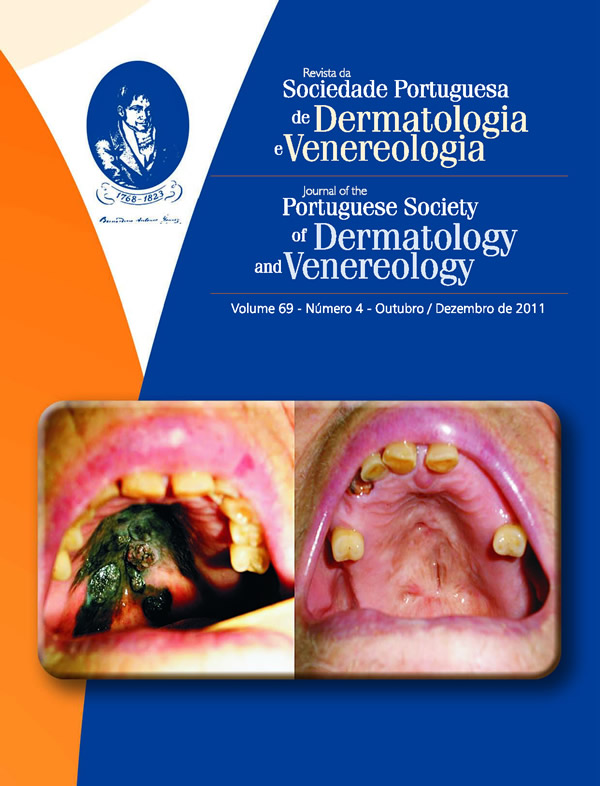SWEAT GLAND TUMOURS – A 10-YEARS REVIEW
Abstract
Introduction: The sweat gland tumours (SGT) are rare and form a heterogeneous group of epithelial neoplasms which are often misdiagnosed.
Material and methods: The authors performed an epidemiologic characterization concerning all the patients diagnosed with both benign and malignant SGT, according to the histopathologic analysis of all incisional and excisional skin biopsies performed between 1999 and 2008 in a Department of Dermatology. Biopsies showing persistence and/ or recurrence of previously diagnosed neoplasms were excluded. All patients were characterized by age, sex, clinical diagnosis and type and location of the neoplasm.
Results: During that period 153 SGT were diagnosed; of those, 92,2% were benign tumours. Hidrocystoma was clearly the most common benign SGT (31.3%), while porocarcinoma was the most frequent malignant neoplasm (50%). Most SGT were localized in the head and nearly 25% in the lower limbs, the latter being for the most part poromas. Most of the patients were female (58,8%). Concordance between clinical and histological diagnosis was observed in only 24,8% of all cases – basal cell carcinoma was the most frequent clinical diagnosis among discordant cases (19,6%).
Conclusions: Clinical diagnosis of most SGT is often challenging; histological analysis is usually required for definitive diagnosis and may be troublesome. As rare tumours, a clear perception of their epidemiology is crucial for an adequate approach.
KEYWORDS – Sweat Gland Neoplasms;Hidrocystoma; Eccrine Porocarcinoma; Poroma; Skin Neoplasms.
Downloads
All articles in this journal are Open Access under the Creative Commons Attribution-NonCommercial 4.0 International License (CC BY-NC 4.0).








